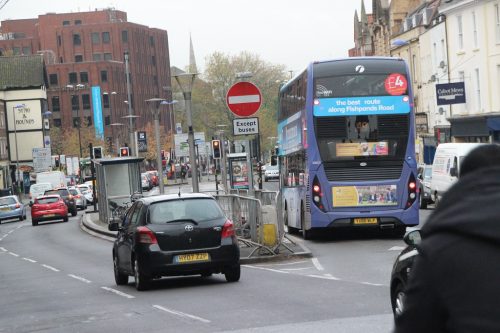
Gareth Evans talks to Shalando Williams, MetroBus Project Manager at First West of England, about the scheme which will transform not only the high-profile new routes with a plethora of bus priority measures, but also the wider network, providing an attractive alternative to the private car
It’s been a long time coming, but Bristol’s MetroBus rapid transit scheme is finally on the home straight. First West of England (WoE) has been confirmed as the operator of the inaugural route, which is set to begin in the first half of 2018.
Explaining what MetroBus is, Shalando Williams, Metrobus Project Manager said: “Using a combination of segregated busways and bus lanes to speed up services, MetroBus will offer an attractive and viable alternative to the private car, which should drive modal shift. It’s a joint project between Bristol City Council (BCC), South Gloucestershire Council and North Somerset Council.
“The aim is to connect key educational, employment and leisure hubs. There’s also been a major investment in infrastructure. The network comprises three core routes.
“The M1 goes from Hengrove in the South to Cribbs Causeway in the North, via the city centre and the University of West of England (UWE). It negotiates the M32 bus-only junction. If there’s anything that will drive demand on Metrobus, it’s the M1 – it’s the project’s shining star.
“Route M2, also known as AVTM (Ashton Vale to Temple Meads) goes from the Long Ashton Park & Ride (P&R) site to the city centre, where it does an anti-clockwise loop and then back to the P&R site.
“M3 is the third route, which runs from Emersons Green on the North Eastern fringes of Bristol to the city centre, via the M32.”
MetroBus services will be run on a commercial basis by bus operators in partnership with the local authorities. The partnership sets out minimum standards covering matters such as emissions, frequencies, fares and cleanliness standards.
First WoE will be operating the M2 route. The operators for the M1 and M3 route is expected to be announced soon.
Priority measures
“There’s been a major investment in infrastructure,” Shalando explained. “The M32 bus-only junction will significantly speed up journey times between the city centre and UWE and North Bristol. UWE forms one of our key markets – MetroBus should remove traffic from the M32.
“There’s also an extension of the M32 bus lane. During a recent Saturday UWE open day, I drove one of our buses along there. I was passing cars on the M32 – it was great. That bus lane is truly money well spent.[…]
By subscribing you will benefit from:
- Operator & Supplier Profiles
- Face-to-Face Interviews
- Lastest News
- Test Drives and Reviews
- Legal Updates
- Route Focus
- Industry Insider Opinions
- Passenger Perspective
- Vehicle Launches
- and much more!


